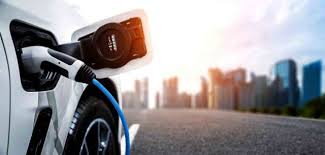Welcome to the world of electric vehicles (EVs), where sustainability meets innovation. Transitioning to an EV is a personal milestone and a global movement towards a cleaner, greener future. As a new EV owner, understanding the nuances of charging your vehicle is crucial to fully embracing this eco-friendly lifestyle.
In this comprehensive guide, we’ll dive deep into the types of chargers available, offer practical tips on daily and long-distance charging, and provide insights on maximizing your investment in this technology. By the end of this discussion, you’ll be well-equipped to navigate the EV charging landscape confidently and efficiently.
Electric vehicle chargers come in three primary categories, each offering distinct benefits and conveniences. Level 1 chargers are the most basic type that usually accompany your vehicle and are compatible with standard household outlets.
While their slower charge rate may require overnight slots to reach full capacity, they offer unmatched convenience in terms of accessibility and ease of use. Level 2 chargers, however, require more substantial infrastructure and investment as they are typically installed at homes or public spaces. These chargers drastically reduce charging time, offering a full charge in a few hours.
Lastly, DC Fast Chargers are mostly found along highways and major roads, delivering rapid charging boosts for long-distance travel. You can browse https://www.delta-americas.com/en-US/products/EV-Charging/ALL/ for those looking to understand a wide range of EV charging solutions.
This site provides detailed insights into various EV charging technologies, including specifications, features, and application scenarios. It’s a valuable resource for comparing different charger types and identifying the best fit for residential, commercial, or industrial needs.
Establishing a daily charging routine is pivotal in fully integrating an EV into your lifestyle. For most users, this means plugging in your vehicle each night using a Level 1 or Level 2 charger to ensure it’s ready for the next day’s activities.
Overnight charging is particularly beneficial as it aligns with off-peak electricity rates, which can save you money over time. Adopting a routine simplifies your day and minimizes the range anxiety often associated with EVs. Regular charging helps maintain battery health, ensuring your vehicle performs at its best over many years.
When it comes to long-distance journeys, careful planning becomes a necessity. Unlike conventional vehicles, EVs require more frequent charging stops, which means setting your travel schedule to accommodate these breaks.
Mapping out charging stations along your route is essential. Numerous apps and websites offer detailed maps showing charging locations, types of chargers available, and even real-time status updates. Embracing the flexibility of EV travel means embracing a pace that allows for relaxation and exploration, turning potential inconveniences into opportunities to enjoy new and unexpected sights.
One of the significant perks of driving an EV is the potential for reduced fuel costs. You can use the lower electricity rates many utilities offer by charging during off-peak hours. Although initially costly, installing a Level 2 charger at home reduces long-term charging expenses by delivering energy faster and more efficiently than public chargers.
For public charging, prices vary widely, so it’s beneficial to familiarize yourself with different providers and their fee structures. Some locations also offer free charging services as an incentive to attract visitors, making it worthwhile to plan stops around these savings opportunities when possible.
Your EV’s battery is its lifeline, requiring care and attention to prolong its life and usefulness. Avoiding extremes, such as fully depleting or constantly charging to 100%, can significantly enhance the health of your battery.
Maintaining a charge between 20% and 80% is often recommended, as this range is less taxing on the battery cells. Regular servicing and software updates are also important. These check-ups can provide insights into overall vehicle health and potential areas of improvement, ensuring that your EV remains as reliable as the day you drove it off the lot.
As a growing community of electric vehicle drivers emerges, understanding public charging etiquette becomes increasingly essential. Many use public charging stations for necessity and as a courtesy to others, ensuring that as many vehicles as possible benefit from limited resources.
Once your car is sufficiently charged, promptly moving it allows others access to the charger. Additionally, it is crucial to understand the etiquette of when and whether to unplug another’s vehicle when it seems finished. As a community, adhering to shared protocols ensures a positive experience for all and upholds the cooperative spirit of sustainability and mutual respect.
Many governments worldwide encourage the shift to electric vehicles through various incentives ranging from tax rebates and credits to financial assistance with home charger installations.
Investigating what is available in your area can significantly reduce the upfront and ongoing costs associated with EV ownership. These incentives benefit individual owners and reflect broader policy objectives to reduce emissions and foster innovation in the transport sector.
Owning an electric vehicle often welcomes you into a vibrant community of like-minded individuals. This network is invaluable, offering support and a wealth of shared experiences.
EV owners share tips, updates, and answers to common questions through forums, meetups, and social platforms. Engaging with this community can ease your ownership journey, providing camaraderie and reinforcing the global shift towards sustainable transport solutions.
Switching to an electric vehicle signifies a commitment to a more sustainable lifestyle. While the transition may come with a learning curve, understanding how to charge efficiently and maintain your vehicle will ensure a smooth and rewarding experience.
Embracing this change benefits you with cost savings and modern conveniences and contributes to a healthier planet. The collective choice towards electric mobility is a significant stride towards a sustainable future, where innovation and responsibility go hand in hand.
More Articles
4 Best Cities to Visit in the USA in 2025
How to Save Money on Umrah Travel – Essential Tips
A&Ta – Meaning, Uses, and What You Need to Know!
20 Packing Hacks to Save Space and Time
